I want to tell you a story. It’s brief. The briefest encounters in life can be the most intense. This is the story of my correspondence and meeting with Ursula K. Le Guin.
A Wizard of Earthsea was my first foray into fantasy that I read in 7th grade. Years earlier, I fell in love with Willow, Krull, and every high fantasy cartoon out there. I counted it twice on the 6-books-a-year-sheet we filled out in middle school for book reports. Mrs. McCullough who filed these records away about the book reports we did never noticed, and I presented on it in 8th grade in Mr. Cavalier’s class as well as counting the entire Earthsea cycle. In Mr. Cavalier’s class, we had to design license plates about us as readers, and I came up with Sci-Fi Guy as my license plate. I drew a dragon confronting a night. The dragon was a mixture of the Magic the Gathering Card: Shivan Dragon and what I imagined Le Guin’s Dragon of Pendor in A Wizard of Earthsea to resemble. At this time, I am devouring the entire Star Wars Expanded Universe novels, reading Dark Horse Comics, and spending way too much money on West End Games Star Wars: The Roleplaying Game.
After I graduated university with my undergraduate degree in 2004, I had come up with a magick system based partly on true names. I had envisioned writing a story with the metaphysics of it all worked out. I made up a system and then began to plot out the story.
The first part of learning magick consists in learning the names that summon and bind. This is called The First—the Language of Naming. Next, wizards learn the words of making and change. This is called The Second—the Language of Making. More spiritually inclined wizards learned from Druidic Ecomancers long ago there is still also another part to learning magick. This is The Third, the ability to listen to the unfolding unity of all relations and to hear in one’s heart being and intuition the language of naming and change. It’s in the Third where Balance of the Source is heard, where it breathes, flows, recedes. Breath, magick, creation—all relations meet in the stillness of this place.
Next, Wizards exist in three stages of complexity. Beginners cast with gesture and invocation of the language of naming and making aloud. Intermediate wizards spellcast with gestures. Lastly, wizards of ultimate power can simply think the language of naming and making.
I worried, however, that my magick system skated too close to A Wizard of Earthsea. At the time, I had only developed the First and the Second. The setting was Macamora. In addition, I read somewhere that if you wrote Le Guin a poem, she would write one of these postcards back to you. In that letter and poem, I confessed to a more Eastern mentality of spiritual practice. Even to this day, I go through bouts with the practice of zazen, and she wisely told me what I needed to hear that became my novel published last year. Her words for me were thus,
Dear Ed,
I expect that as you work on your system and as you embody it in stories, it will continue to develop—and may begin to surprise you by developing in ways you didn’t expect or can’t control. Control is in fact a dangerous illusion—as you know from your discipline of zazen! –In any case, I wish you much delight in your inventions—and thank you for the poem!
I wish you all the best from Gont and Havnor to Thoragin and Shard Cytol (Places pictured below on the first map of the world I was beginning to create that I mentioned in the letter to her)
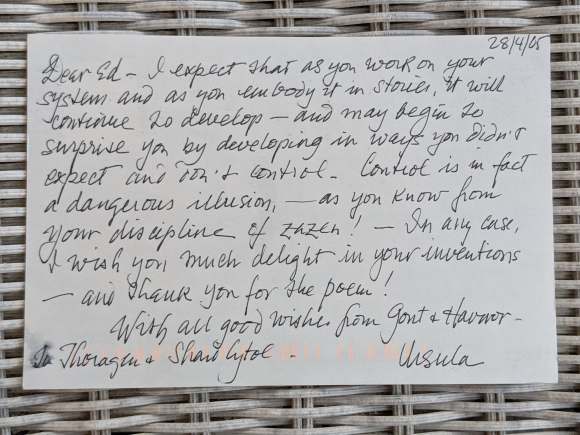
After that, the project of creative writing puttered out. Out of steam, I was working jobs, making rent, and living with Ashley before we were married. It was a time of trying to master Kant’s writings. I imagined of being a philosophy professor. Then, I got into Simon Fraser University’s MA program in 2006 and put down my pen to become a philosopher.
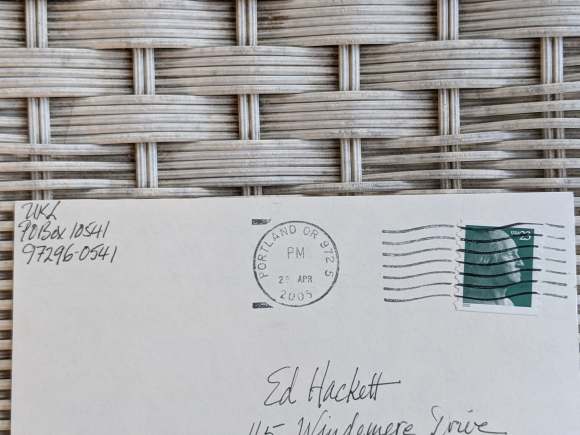
Then, Ursula K. Le Guin announced she would attend to the International Writers Festival in October 2008. She was coming to Vancouver, BC! On the day of tickets, I bailed on attending Kathleen Akin’s morning Philosophy of Mind Seminar. I lived on Burnaby Mountain on the Eastern edge of Vancouver proper in a part called Burnaby. I woke up at 6:00 AM. I had to take the bus to get to Granville Island. The ticket office would only sell Le Guin tickets at either 7 or 8 AM. It would take nearly two hours to get there by bus. I trucked it on out there. I was the very first in line. I was not going to miss this.
The night of the event. I could not contain myself and in my absentmindedness, which as stereotypes of philosophy professors go is pretty true, I realized I did not have a copy of A Wizard of Earthsea. It is the most important book to me, maybe even to this day save what William James has written, and I didn’t own a copy! In haste, my wife and I stopped by Chapters, the Canadian version of Barnes’n Noble. I wanted one of the older covers to A Wizard of Earthsea. She had to sign that book. It couldn’t be any other book in the Earthsea Cycle. It had to be A Wizard of Earthsea. I settled on this book below. I asked her two questions that night (I will take those two questions with me to the grave as not everything personal should be shared). I told her what her writing meant to a young man with an alcoholic mother and what coming of age story meant. I can say a lot here; I cried at her. She touched my left hand and signed it: “For Ed.”
I did not write again. I tried my hand at a few short stories. They never became anything. Vancouver was about surviving an analytic philosophy department while having my heart in the completely wrong place–Continental and American philosophy. I applied to Southern Illinois University’s Ph.D. program, got in, got funding, and set to work on an adventure. Meanwhile, the map of Macamora resided in my mind. One night in Carbondale, Illinois I finally finished the outward islands and redrew it about the same time I was helping out with Carbondale’s Alateen Group that met about a block from my house.
When my wife got really sick during my Ph.D., I started to write once again, and picked up the story of Macamora and those places mentioned on Le Guin’s postcard (pictured below). Originally, the story was about a girl wizard who were the glamours of a boy to learn magick. The Archmage was called the Prime Magus, just as in Flight of the Ravenhawk. Some places like the Icetorn Sea and Zalanthas appear on both maps. Sunona the Last Enchantress made it to about 36 pages. Then, I scrapped it, regarded the dream of being a novelist and a writer as silly. On this map, which I still own, you can see Shard Cytol and Thoragin in the Center Ring.
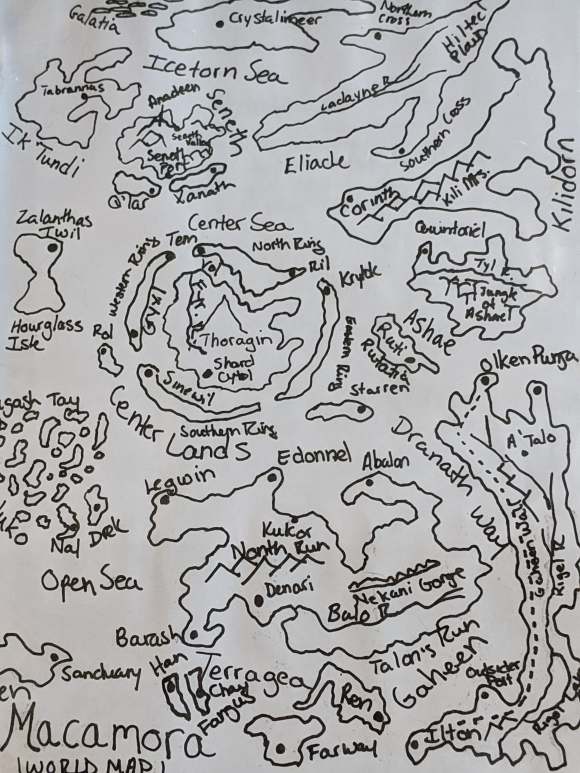
My dissertation and preliminary (comprehensive) exams took up an entire summer. I finished my Ph.D. in four years and more than likely ruffled feathers of a few academic egos along the way. Ashley was sick, and I had to finish. During the dissertation, however, I learned what it meant to write 61,000 words. The dissertation is a transitional piece; it’s the first professional work you write as a scholar and it’s the last thing you write as a student. The dissertation lurks in between. I could not have written a novel before learning what disciplined writing meant. Eventually, the dissertation and additional papers I developed out of it became my first solo book.
During my Ph.D. the system of magick still burnt in my mind brilliantly. From time to time, I would pull out that book and remember one of my dreams. Next, I would pull out old Mage the Ascension supplements and read them for fun. There were gamers in town, but none of them wanted anything to do with me. My emotions were scattered. I was not my best, but I got through it with the one person who mattered the most—Ashley.
Fast forward two years from my Ph.D, My wife and I are living in Cleveland now. She had taken a job at Baldwin Wallace University, and I had secured a job being a full-time youth counselor in Bay Village. The pay was abysmal but it beat being a scrapping-together-to-make-ends-meet philosophy jobs between Akron, Kent State, and other nearby universities. Then, this job did not pan out, and so I was left in the middle of Berea Ohio. In this transition, I started to write and finally put pen to paper. Flight of the Ravenhawk emerged. I made it to about 38,000 words and sent it to small presses looking for novellas. It took two years of rejections before someone snagged me.
As close as Ken Stikkers read my dissertation, Ms. Corrine Anderson did the same with the novella, yet she saw the book I did not. She pointed out missed details, story hooks, things to develop, and scenes that could be told. The novella went from 38,000 to about 52,000 words. The sequel – The Rise of the Azure Spire – is now at 73,000 words and is nearly done. After receiving her advice and a contract, I had moved from Cleveland and taken up a position as Lecturer at Savannah State University, an HBCU on the Eastern Edge of Savannah.
 And so it was that after 6 years, three scholarly books and a bunch of peer-reviewed articles I found my stride to draw out the map below. If you read Flight of the Ravenhawk you’ll see some influence. For all the worry, Le Guin was right. The story took on a life of its own. I have more races than Earthsea. There are a few religions and vying interpretations about magick that lend itself to the question of an Empire Building while also speculations about what nature is. This came out, largely, from engaging Robert Corrington’s work at one academic conference. My practice of zazen is embodied in the characters’ lives. I realized that writing fantasy is just doing speculative metaphysics but without the need to justify those speculations as one does when reading Hegel or Whitehead.
And so it was that after 6 years, three scholarly books and a bunch of peer-reviewed articles I found my stride to draw out the map below. If you read Flight of the Ravenhawk you’ll see some influence. For all the worry, Le Guin was right. The story took on a life of its own. I have more races than Earthsea. There are a few religions and vying interpretations about magick that lend itself to the question of an Empire Building while also speculations about what nature is. This came out, largely, from engaging Robert Corrington’s work at one academic conference. My practice of zazen is embodied in the characters’ lives. I realized that writing fantasy is just doing speculative metaphysics but without the need to justify those speculations as one does when reading Hegel or Whitehead.
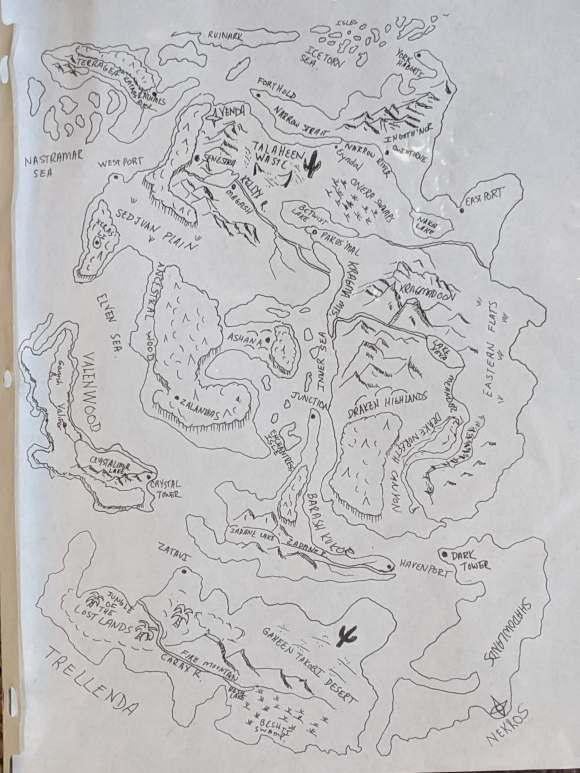
I named the new world, Apeiron. Philosophers will recognize that this term is taken from Anaximander, one of the early Pre-Socratic philosophers. As with all the Pre-Socratics, we only have fragments of their writing. In short, we have other people quoting what they said, but have no works attributed to any of the Pre-Socratic philosophers. Apeiron means unlimited, boundless, or that which has no limit. Given that Apeiron has no limit to me as the writer and creator, it exists with no limits. As I comeback to it, even now tonight finishing up a combat scene, the world still has no limits. The name is fitting especially as a philosopher I have made decisions philosophically about the world, something I think Le Guin did with Taoism in Earthsea. For those who do not know, Le Guin wrote a poetic version of the Tao Te Ching and attempted to retell it in English. It’s not a translation, but her impression of its core, fleshed out, worked over, and shall I dare say—beautiful. Philosophy can infect even the telling of fantasy: another lesson Le Guin taught me by example, but not in person.
How has philosophy shaped fantasy?
The Elves are Emersonian about nature. The Dwarves are Stoics. Necromancers are that bad interpretation of Nietzsche that sees persons as exercising their will-to-power without regard to anything outside of that exercise. I have not decided what humans are and that relates to the question Scheler asked in his The Human Place and the Cosmos. The question ‘What are human persons?’ strikes me as it did him, so in writing about human beings fictionally, they are most fascinating and terrifying. In the end, philosophy and my own emergence as a scholar gave me the confidence to complete this novel. However, one cannot proceed without noting those that have backed him, my darling wife Ashley, the masterful Ms. Corrine Anderson, my editor, and the muse to whom I owe in spirit, Ursula K. Le Guin. I am sad that I never wrote her again, and that I never could share what became of those words etched into my soul like a Mindkeeper’s rune. She died a year before Flight of the Ravenhawk came out.
Thank you for listening to my story of my story and how one of the briefest encounters in word and person transformed me so.
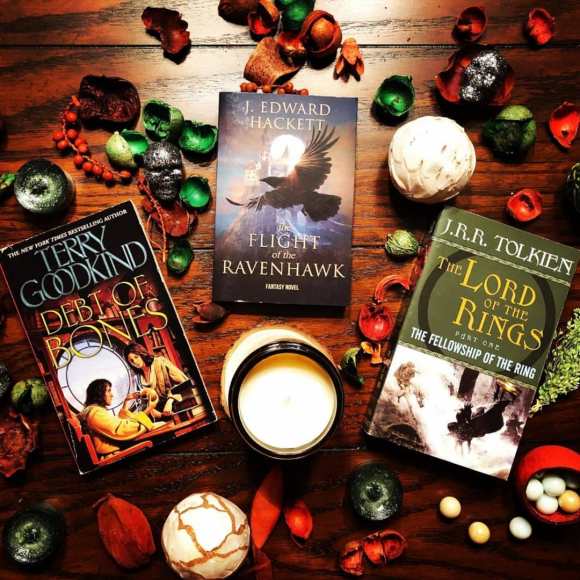


2 replies on “Meeting and Corresponding Briefly with Ursula K. Le Guin”
Reblogged this on The Inkwell And Quill.
Very Cool.